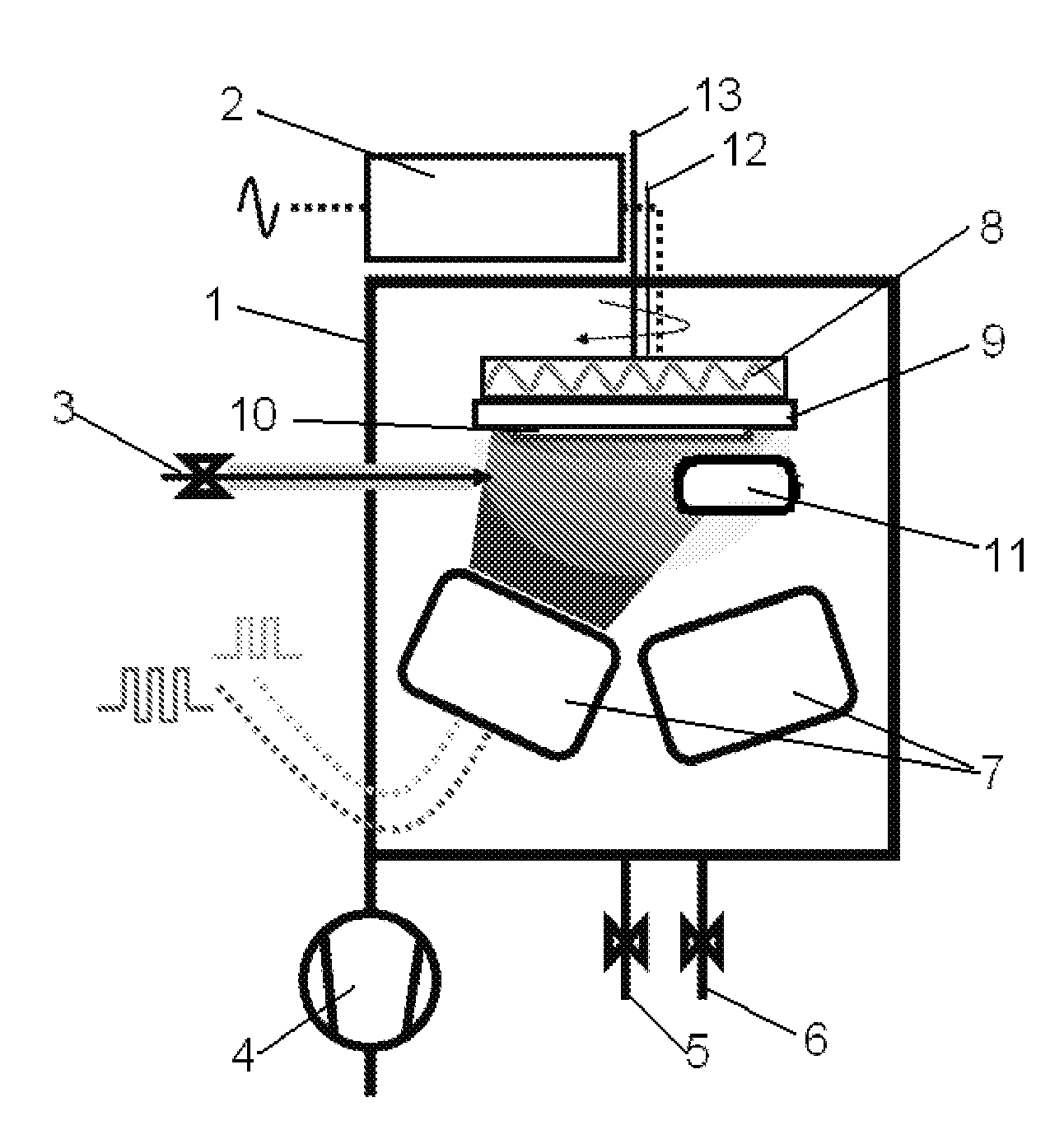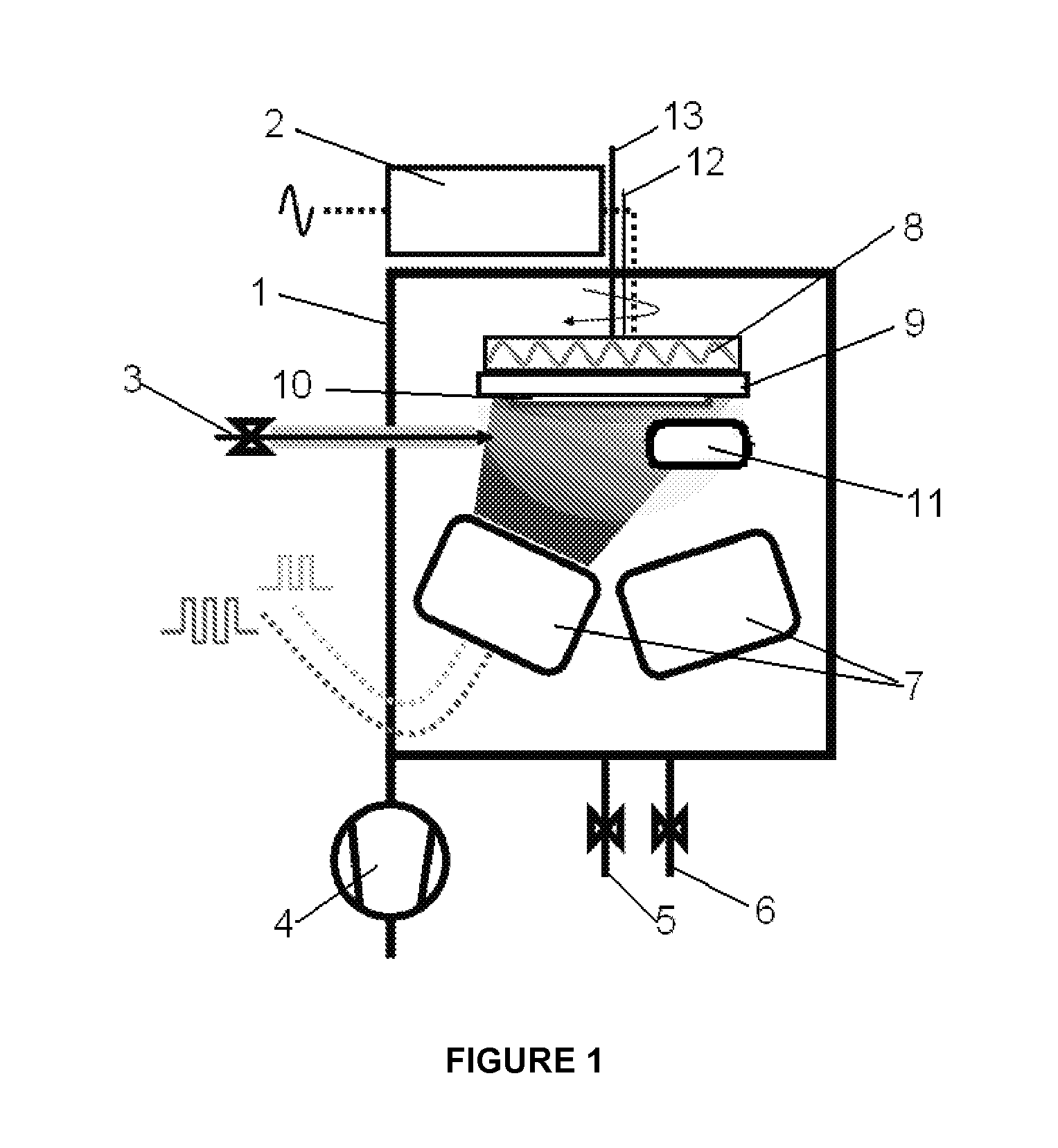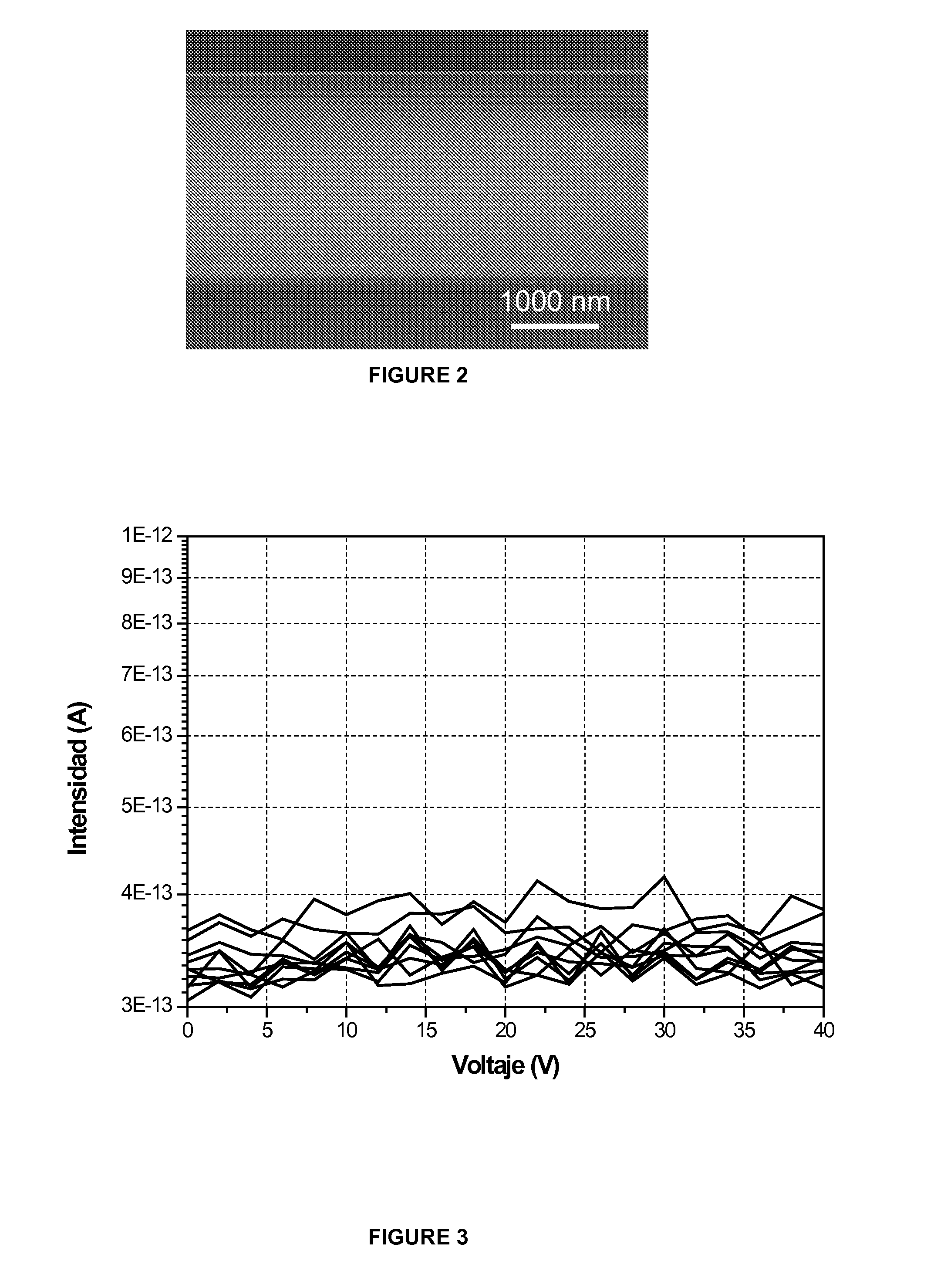Method for producing a dielectric and/or barrier layer or multilayer on a substrate, and device for implementing said method
a technology of dielectric and/or barrier layer, applied in the direction of final product manufacturing, chemical vapor deposition coating, climate sustainability, etc., can solve the problem of monolithic integration of metal substrates, inability to make monolithic integration on metal substrates, lack of effective dielectric materials,
- Summary
- Abstract
- Description
- Claims
- Application Information
AI Technical Summary
Benefits of technology
Problems solved by technology
Method used
Image
Examples
example 1
[0070]The following describes in detail an example (Example 1) of the procedure for depositing a layer of silicon dioxide (SiO2) on a metal substrate from a silicon target placed on the cathode of the magnetron, wherein said process includes a deposition stage implementing the PECVD technique, another deposition stage implementing the PVD and PECVD techniques simultaneously, and a final deposition stage applying the PVD technique (sputtering):
[0071]1. The first stage consists in cleaning the substrate (9) by washing it with an aqueous phase, organic or combined solvents, and ultrasound. These are standard pretreatment processes in the industry of coatings on metal substrates and are fully described according to the type of material and the previously performed formation and thermal treatment processes.
[0072]2. The clean and dry substrate (9) is placed on a rotating and polarizable sample holder (8) with a diameter of 10 cm, which is introduced into the vacuum chamber. Cleaning is pe...
example 2
[0082]The following describes in detail an example (Example 2) of the procedure followed to deposit a multilayer system on a metal substrate, where said process includes a deposition stage of SiO2 implementing the PECVD technique, another deposition stage of a mixed oxide of aluminum and silicon (AlxSiyOz), by implementing the PVD and PECVD techniques simultaneously, and a final deposition stage of aluminum oxide (Al2O3), implementing the PVD technique (sputtering).
[0083]1. The first stage consists in cleaning the substrate (9) by washing it with an aqueous phase, organic or combined solvents, and ultrasound. These are standard pretreatment processes in the industry of coatings on metal substrates and are fully described according to the type of material and the previously performed formation and thermal treatment processes.
[0084]2. The clean and dry substrate (9) is placed on a rotating and polarizable sample holder (8) with a diameter of 10 cm, which is introduced into the vacuum ...
PUM
| Property | Measurement | Unit |
|---|---|---|
| Temperature | aaaaa | aaaaa |
| Temperature | aaaaa | aaaaa |
| Thickness | aaaaa | aaaaa |
Abstract
Description
Claims
Application Information
 Login to View More
Login to View More - R&D
- Intellectual Property
- Life Sciences
- Materials
- Tech Scout
- Unparalleled Data Quality
- Higher Quality Content
- 60% Fewer Hallucinations
Browse by: Latest US Patents, China's latest patents, Technical Efficacy Thesaurus, Application Domain, Technology Topic, Popular Technical Reports.
© 2025 PatSnap. All rights reserved.Legal|Privacy policy|Modern Slavery Act Transparency Statement|Sitemap|About US| Contact US: help@patsnap.com



